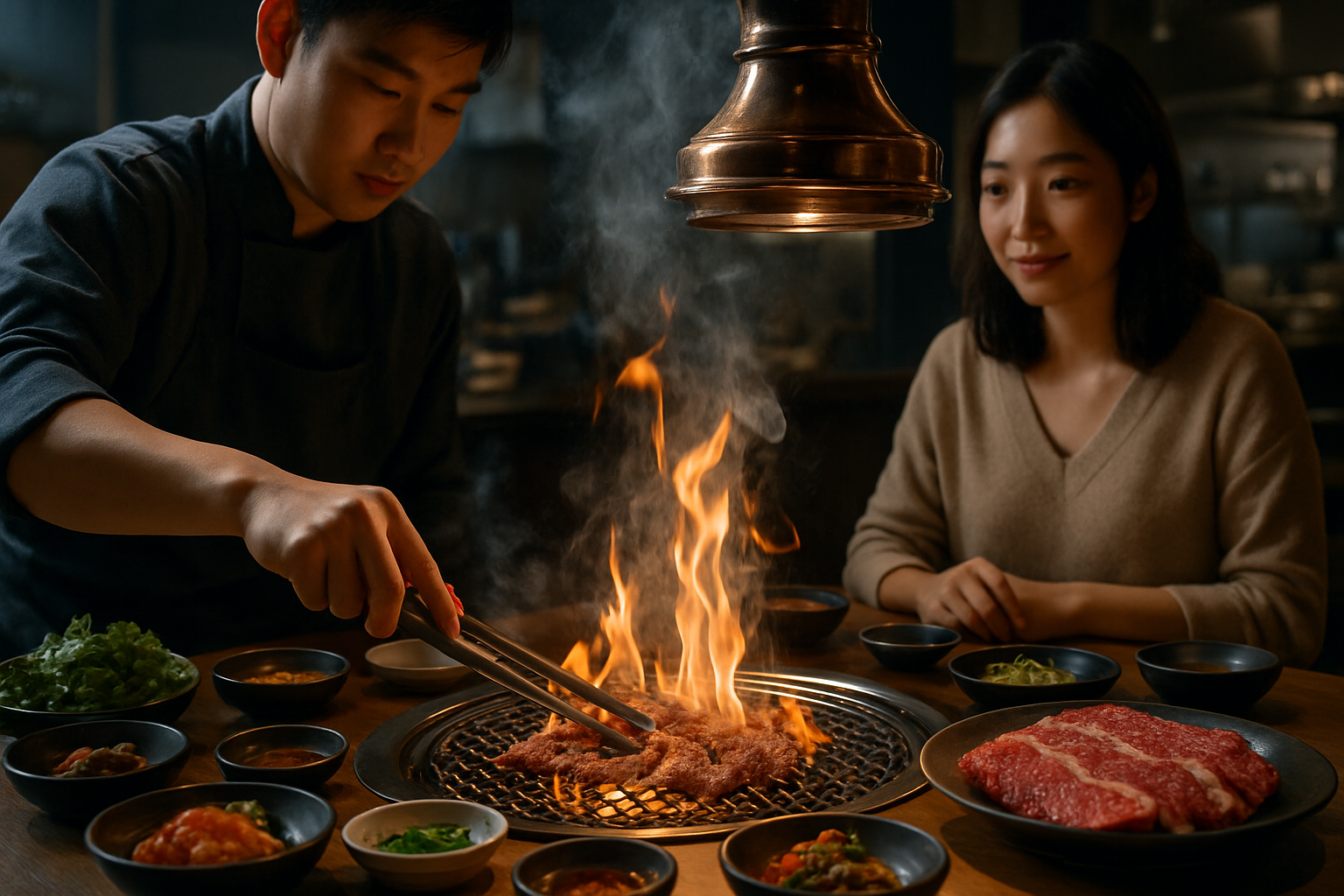Savoring the Sizzle: Exploring the World of Korean Barbecue
Korean barbecue has taken the culinary world by storm, captivating taste buds with its tantalizing flavors and interactive dining experience. From sizzling meats to an array of savory side dishes, this unique cuisine offers a feast for the senses. Join us as we delve into the art of Korean barbecue, uncovering its rich history, essential ingredients, and cooking techniques that make it a global sensation.

The concept of tabletop grilling gained popularity during the Joseon Dynasty (1392-1910), when it became associated with royal court cuisine. As Korea modernized in the 20th century, Korean barbecue restaurants began to emerge, bringing this once-exclusive dining experience to the masses. Today, it has become a global phenomenon, with Korean barbecue restaurants popping up in cities worldwide, introducing people to the joys of interactive dining and bold Korean flavors.
Essential Ingredients and Cuts of Meat
At the heart of Korean barbecue lies an array of high-quality meats, carefully selected for their flavor and texture. The most popular cuts include:
-
Galbi: Marinated beef short ribs, known for their rich flavor and tender texture.
-
Bulgogi: Thinly sliced beef marinated in a sweet and savory sauce.
-
Samgyeopsal: Thick slices of pork belly, often grilled without marinade.
-
Dak-galbi: Spicy marinated chicken, typically cooked with vegetables.
These meats are often accompanied by an assortment of banchan (side dishes), including kimchi, pickled vegetables, and various salads. The combination of grilled meats and diverse side dishes creates a balanced and satisfying meal.
Marinades play a crucial role in Korean barbecue, infusing the meat with complex flavors. Common ingredients include soy sauce, garlic, ginger, sesame oil, and gochujang (Korean red chili paste). These marinades not only enhance the taste but also help tenderize the meat, resulting in a mouthwatering dining experience.
The Art of Tabletop Grilling
One of the most distinctive aspects of Korean barbecue is the interactive dining experience it offers. Guests gather around a table equipped with a built-in grill, where they cook their own meat to their preferred level of doneness. This communal cooking style encourages social interaction and creates a lively atmosphere.
The grilling process itself is an art form. Different meats require specific cooking techniques to achieve the perfect texture and flavor. For example, galbi is typically grilled slowly to allow the marinade to caramelize, while samgyeopsal is cooked quickly to achieve a crispy exterior while maintaining a juicy interior.
Proper grilling etiquette is also an important aspect of Korean barbecue. It’s customary for the youngest or most junior person at the table to take charge of the grilling, ensuring that everyone’s meat is cooked to perfection. This practice fosters a sense of respect and community among diners.
Beyond the Grill: Accompaniments and Pairings
While the grilled meats take center stage, the accompaniments and pairings in Korean barbecue are equally important. The array of banchan serves not only as side dishes but also as flavor enhancers and palate cleansers. Some essential accompaniments include:
-
Ssam: Leafy vegetables like lettuce or perilla leaves used to wrap the grilled meat.
-
Ssamjang: A thick, spicy dipping sauce made from gochujang and doenjang (fermented soybean paste).
-
Garlic and green onions: Fresh aromatics that complement the rich flavors of the meat.
-
Dongchimi: A refreshing radish water kimchi that helps cut through the richness of the meat.
Beverage pairings are also crucial to the Korean barbecue experience. Traditional Korean alcoholic beverages like soju and makgeolli are popular choices, as their clean flavors help balance the bold tastes of the grilled meats. For non-alcoholic options, barley tea (boricha) or cold Korean plum tea (maesil-cha) are refreshing alternatives that complement the meal.
The Global Impact of Korean Barbecue
Korean barbecue has transcended its cultural origins to become a global culinary phenomenon. Its popularity has led to fusion creations and innovative interpretations around the world. From Korean barbecue tacos in Los Angeles to bulgogi pizza in New York, chefs are finding creative ways to incorporate Korean barbecue flavors into diverse cuisines.
The rise of Korean barbecue has also contributed to the broader appreciation of Korean cuisine and culture. It has become a gateway for many to explore other aspects of Korean food, such as street food, traditional stews, and fermented dishes. This culinary diplomacy has helped foster cultural exchange and understanding, bringing people together through the universal language of food.
Useful Tips for Enjoying Korean Barbecue
-
Start with lighter meats like pork or chicken before moving on to richer cuts of beef.
-
Don’t overcrowd the grill; cook meat in small batches for optimal results.
-
Use scissors to cut meat into bite-sized pieces before serving.
-
Experiment with different combinations of meat, vegetables, and sauces in your ssam wraps.
-
Try grilling kimchi or garlic cloves alongside the meat for added flavor.
-
Remember to ventilate the dining area well, as Korean barbecue can produce a lot of smoke.
Korean barbecue offers a unique and exciting culinary adventure that engages all the senses. From the sizzle of meat on the grill to the complex interplay of flavors and textures, it’s an experience that brings people together and celebrates the joy of communal dining. Whether you’re a seasoned fan or new to this cuisine, Korean barbecue continues to evolve and surprise, making each meal a delicious exploration of taste and culture.





